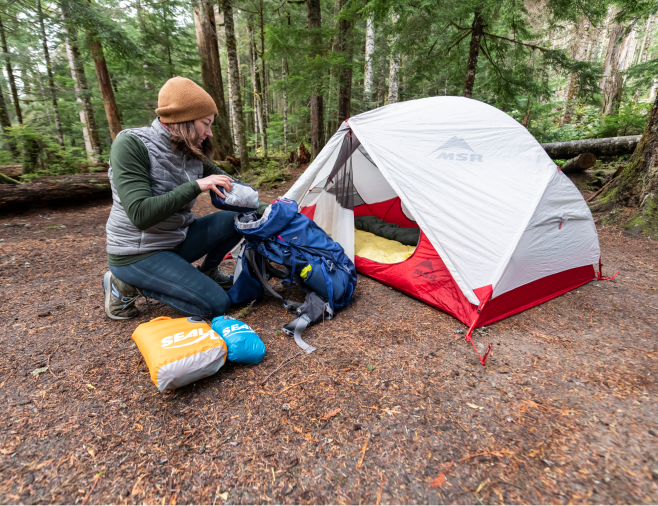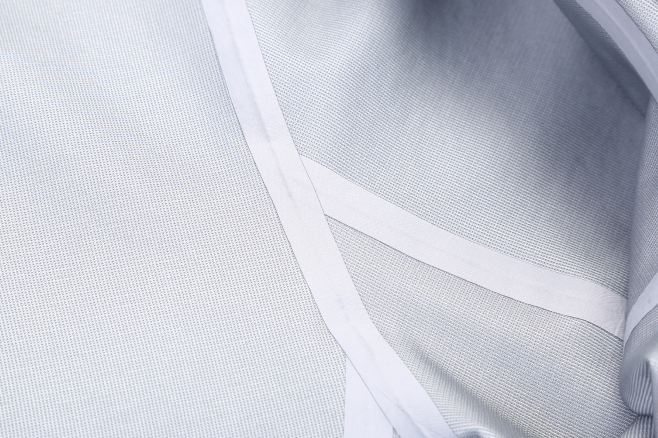However well designed they are, outdoor performance clothes all share the same essential weakness:
They are stitched. Needles puncture laminates and downproof fabrics, compromising their ability to keep water out or feathers in. The common solution to this problem is to cover each seam with an adhesive waterproof tape. It effectively seals the holes made by sewing needles, but adds painstaking steps to garment manufacturing.
Stealth, a company based in Hong Kong, and founded by two apparel industry veterans, has developed and patented a process that replaces stitching with welding to bind fabrics together. It avoids two issues related to traditional stitched and taped seams: it does not use glue, which rarely ages well, and it does not apply any heat, which tends to singe lightweight synthetic fabrics.
The seeds of this new technology were sown at a meeting in Jangzhou, China, in 2007. Richard Strompf and Karl Lu realised they faced the same questions over lightweight performance gear. They had found that traditional manufacturing methods meant lightweight fabrics of less than 100 deniers were problematic in production and led to quality issues; stitching weakened the seams, and the glue used to fix a waterproofing seamtape was prone to delamination. Highfrequency welding was not always possible as the heat used to fuse seams would often damage fabrics. The duo committed to overcoming the problem and founded Stealth Welded Seam Technology in 2016.
“There’s too much outdoor gear today that fails after only a few seasons, and we wanted to create performance products that last,” says Karl Lu. A chemical engineer and manufacturing expert, Mr Lu has a 20year history of developing new products and production technologies.
Richard Strompf has 30 years’ experience in performance wear production and adventure sports. “He has the unique vantage point of knowing how performance wear fails across ocean and land, and the pitfalls of current production methods,” Ben Mears tells WSA. Based in London, Mr Mears is a designer, consultant and business development manager for the team.
Dual Welding?
Why What's The Problem With Stitching?
A combination of welding techniques may provide a new solution to a critical feature of performance outdoor clothing: making watertight and airtight seams. A process developed by Stealth Welded Seam Technology promises to extend the life of ClimateProof garments and increase the thermal insulation of Coldweather gear.
Innovation in Seaming?
Techniques to weld two fabrics together edgetoedge and cover the seam with tape made from the same fabric. “We use specially modified ultrasonic and highfrequency machines that are customised inhouse,” says Mr Lu. The process can be applied on synthetic woven materials, but not on knitted fabrics. “All fabrics must be coated or laminated to Stealth’s specifications for the welding process to work effectively,” he says. Ultrasound welding is used to join the two fabrics edgetoedge, and highfrequency welding is used to apply the tape to the seam.
In 2017, the company began applying its Stealth welding technologies to make air mattresses, before moving on to sleeping bags and watertight packs. The range of products it manufactures has since expanded to include a full range of performance gear, from tents to apparel. It is now preparing to scale up its manufacturing capabilities with the opening of a new solarpowered factory due to begin production this autumn.
Increased strength and warmth?
In tests, Stealthwelded seams have been found to have superior strength and to increase the thermal insulation of puff jackets. The seam’s robustness was assessed using an ASTM D1683 test method. A force perpendicular to the stitched seams is applied until seam failure occurs. Two identical swatches were made from the same 100% nylon woven material weighing 275 gsm. One swatch was welded, the other stitched.
The pull test was repeated three times inhouse and results showed that the stitched seam sample had an average tensile strength of 240.36N while the Stealth welded sample returned a tensile strength of 385.03N, making the welded seam 46% stronger than the stitched one. This confirms, the company says, that holes made by sewing needles make stitched seams prone to breakage and tearing. “The results are impressive, as the fabric comes apart before the seam does,” says Mr Mears.
The technology has also been found to increase the thermal power of ultralight down jackets by reducing cold spots caused by stitching holes. Tests show that its welded baffles improve a product’s warmth retention by 90%. Intertek conducted a series of tests that compared sewn and welded downfilled pillows under BS EN310921993 guidelines. Both samples were made from a same 100% nylon woven fabric, weighing 62 gsm, and filled with 90% goose down fill using a bafflebox construction. Results showed an insulation rating of 1.2 CLO for the stitched sample and a 3.3 CLO rating for the Stealthwelded seam sample.
"As there are no puncture holes caused by the needle in stitching, there is muchreduced air loss and subsequent heat loss. This leads to a huge performance benefit,” says Mr Lu. For down jackets, he says Stealth “is unique because it can be used on fabrics of less than 100 deniers”. Existing welding techniques are impossible on such weights, he argues, as they damage the seams, which is why current lightweight quilted.
styles are still stitched. Mr Mears adds that “due to the higher warmth retention, a Stealthwelded garment may contain less filler, making it lighter for the same level of insulation".
Clean Lines
Beyond the improved performance, Stealth seams also contribute to cleaner aesthetics. The samefabric taping is said to be 50% thinner than conventional waterproof taped seams, making the finished garment more flexible and lighter in weight.
From a sustainability point of view, this solution is believed to further a garment’s useful life. Adhesives used for seamtaping tend to lose their holding power over time leading to delamination and frayed edges that are difficult to repair.
The founders believe their technology can be compared to the performance breakthrough W.L. Gore introduced some 50 years ago with the first waterproofbreathable laminates by providing a solution to make outdoor apparel and gear last longer..








